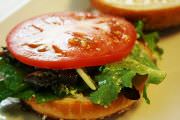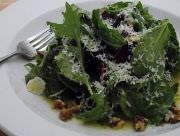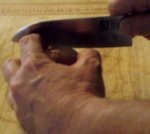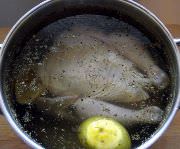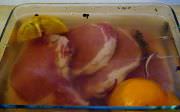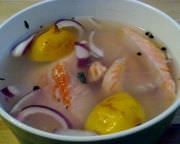A Simple Brine Solution And Easy Brining Methods
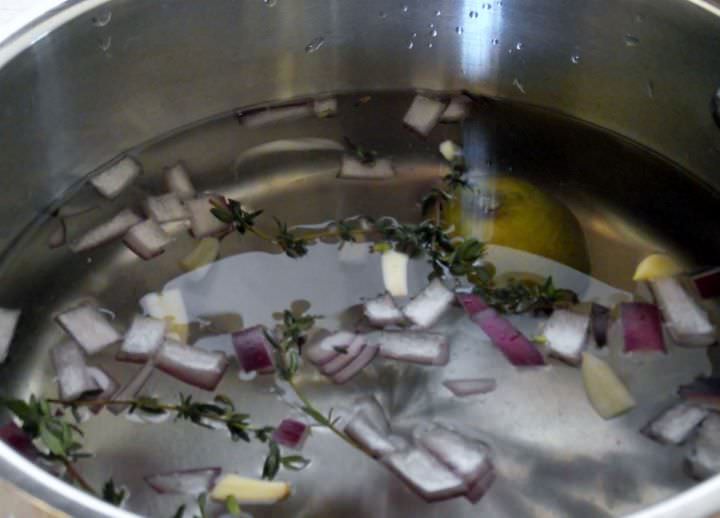 A Simple Brine
A Simple BrineWhat Should You Brine
Chicken, turkey, pork and fish are great for brining because they are lean, and mild in flavor, and brining enhances flavor, moisture, and texture.
There are a lot of brine recipes, but the truth is you only need to know how to make a brine solution, that's it.
There are only two types of brines, gradient brining and equilibrium brining. Dry brining isn't a brine at all, it is a method of curing and once a protein is cured the salt will aid with moisture retention during cooking.
Once you know how to make a brine solution it doesn't matter whether you want to make a turkey brine, chicken brine, pork brine, or fish brine they all start the same way. The length of time that a protein is left in the brine is determined by the thickness of the meat being brined.
The larger the protein the longer it takes for the salt to penetrate throughout the meat. For a turkey brine you probably want to give it the full 48 hours. For a chicken brine between 12 and 24 hours is sufficient. Pork brines vary greatly because the cuts of pork vary so much. If you're brining a 4 pound pork roast you probably want to let it go for about 36 hours, whereas a rack of ribs only needs 8 to 12 hours. A skinless salmon filet needs between 6 and 8 hours.
After brining you rinse and allow the protein to air dry. The rinsing step removes all of the large salt deposits on the outside of the protein and the air drying step allows the salt to reach equilibrium. Air drying also produces a crisper skin or surface.
The Best Salt For Brining
Kosher Salt is perfect for brining because the flat, flaky crystals dissolve extremely well in water and create a crystal clear brine. Whatever salt you choose, do not use iodized salt, unless you want your food to taste like iodine.
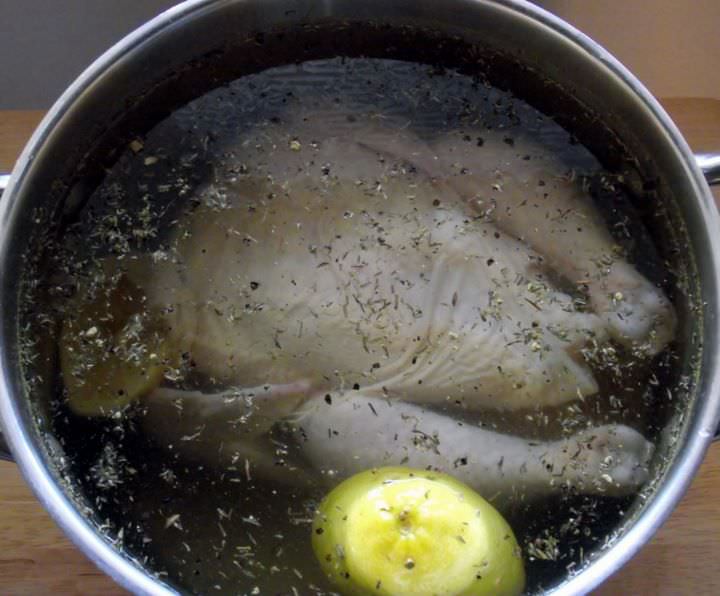 Chicken Brine
Chicken BrineHow Brining Works
Brining is an ages old method of food preservation. Instead of preserving, we can use smaller quantities of salt mixed with other spices and herbs, this allows brining to penetrate meat and carry flavor into the interior while helping to maintain moisture and improve texture.
The process of brining is easy but takes some planning. Depending on the size of what you want to brine it can take up to 48 hours.
Brining works by the dual processes of diffusion and osmosis. When meat is placed in a brine, the salt concentration disrupts the structure of the muscle filaments or fibers. Diffusion allows the salt to flow into the muscle cells of the meat. As the concentration of salt equalizes inside the cell, osmosis draws water into the muscle cell. This is why the ratio of salt and water are important when brining.
Meat absorbs as much as 10% of its weight through brining. When it cooks it still loses moisture, but that moisture loss is offset by the brining process.
How To Determine The Salinity Of A Brine Solution
The most common question about brining is "how much salt should I add to the water." The answer depends on which method of brining you use, gradient or equilibrium.
Brining Methods
Gradient Brining
A gradient brine is a brine solution that contains a much higher salt concentration than you want in your finished food. When using a gradient brine it typically contains about 5-10% salt, based on the water’s weight. The food is then placed in the brine for as little as 15 minutes and as long as a few days.
When the protein has finished brining it is followed by a rinsing step. This rinsing step is then followed by a resting period which allows the salt gradient to form an equilibrium as the sodium and chloride ions finish diffusion.
When the meat is rinsed and allowed to rest for a period of time, usually a few hours to overnight, the remaining sodium and chloride ions will finish diffusing reaching a state of equilibrium. This is the same reason why you allow meat to rest after cooking. However, salt diffusion takes between 100 and 1,000 times longer than heat diffusion, you usually only need to rest meat for 5-30 minutes after cooking, whereas, a brined protein will need to rest anywhere from 2-24 hours, after being removed from the brine.
Equilibrium Brining
Equilibrium brining is a more accurate method of brining, compared to gradient brining, but it takes longer. However, the time it takes to gradient brine and then rest, or air dry, the protein after, as much time as doing an equilibrium brine. The amount of salt dissolved in the brine solution is only enough for the interior of the protein to reach the precise amount of salt desired, making it impossible to over brine.
Weigh water and food together, subtracting any bone weight, since salt will not diffuse into bones.
Multiply the combined weight of the water and meat by the desired finished salinity you want your protein to contain at the end of the brining process, usually between 0.5 and 1 percent, by weight.
Dissolve the appropriate amount of salt into the water and place food in the brine. Because you added the food eight to the water weight the salinity of the water is going to be higher. As the protein absorbs salt the salinity of the water is going to drop.
Use a salinity meter to take readings throughout the brining process. When the brine’s salinity drops to the desired finished salt percentage, the brine and protein have reached a state of equilibrium and the bringing process is complete.
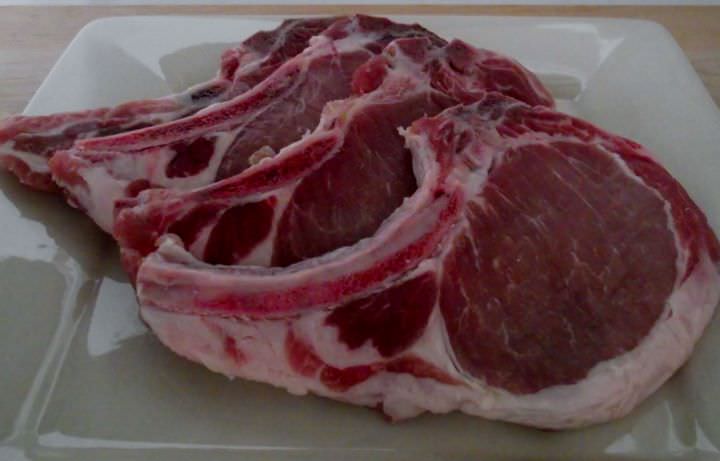 Brined Pork Chops
Brined Pork ChopsWhat Should You Add To The Brine For The Best Results
There is almost no limit to what can be added to the brine. However, some ingredients are better than others, in terms of brining. Aromatic vegetables like onions, garlic, and shallots are excellent choices. As are, citrus fruits like limes, lemons, and oranges. Fresh and dried herbs are also excellent choices, especially thyme, parsley, cilantro, oregano, and rosemary. Fresh and dried chilies can be a great addition, just remember to gauge the heat appropriately for your friends and family.
Adding sugar to a brine does two things, first it helps to diminish the salty taste in the brined meat. Secondly, it helps with the maillard reaction, caramelizing and browning, the outside of the meat or skin during cooking.
Brine Recipes
Tags: brine solution, brine recipes, turkey brine, chicken brine
